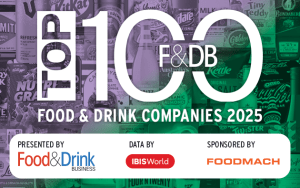Here is an opening statement any company would be thrilled to make, “Pact Group Holdings Ltd today announced it had exceeded its Prospectus profit forecasts for the full year ending 30 June 2014, with statutory net profit after tax and before significant items of $59.7 million, 13.5% higher than the Prospectus forecast of $52.6 million.”
Pact Group is twelve years old and a very different company from the one that began in 2002. Here is its story:
And here is its snapshot of a company that’s growing: Compared to its previous year’s results, the company’s Statutory EBIT before significant items was up by 4.8% to $147.0 million and pro forma EBIT before significant items was up by 9.0% to $148.5 million. Statutory NPAT after significant items of $57.7 million was significantly better than the Prospectus forecast of $25.2 million. Pro forma NPAT before significant items of $83.8 million was better than the Prospectus forecast of $83.5 million. Pro forma EBITDA of $202.1 million was in line with the Prospectus.
What were the major contributors to the improved performance this year?
- Lower than forecast post-IPO financing costs
- Lower than forecast swap termination costs associated with the pre-IPO USD denominated loan facility
- The tax benefit of $19.2m announced to the ASX on 7 August 2014.
Pact managing director and chief executive officer, Brian Cridland, commented, “Pact has successfully continued its positive growth momentum in the first year of listing by bettering Prospectus profit forecasts and achieving solid year-on-year growth. These results reflect the diversity and resilience of the business.
“Product innovation, improving productivity through automation, simplification and innovation, and the integration of the four businesses acquired at IPO, have contributed to this pleasing result. EBITDA and EBIT margins remained stable despite challenging market conditions and the business has seen strong cash flow generation, with operating cash flow of $198.9 million up 11.8% on FY13.”
So, what is Pact doing right?
1. Pact has made itself the largest manufacturer in Australasia of rigid plastics packaging and 76% of its revenue from comes from everyday staple products.
This gives the company its earnings resilience. Despite a challenging macroeconomic environment, Pact Australia’s sales revenue increased to $822.7 million compared to $813.1 million in the prior year.
The Australian business it acquired at IPO helped to negate the effects of adverse events, such as the loss of a major contract in the second half of the prior financial year and soft agricultural sales during the first half of FY14 due to drought conditions in rural Australia.
2. Pact’s product diversity provides resilience in earnings and its innovation supports growth and ongoing market leadership. Pact is the market leader in rigid plastics in Australia and New Zealand, the highest growth sector in the packaging industry, and a leader in industrial metal packaging. Substrate conversion and alternative technologies have led to greater product diversity and a broadening of Pact’s client base across all sectors.
3. Pact has a relentless focus on cost control and driving productivity gains. During the year, Pact continued to improve productivity through the automation of production lines and consolidation of production sites across the Group. As well, Pact has invested in developing a standalone IT platform to drive additional productivity benefits. Despite challenging market conditions, Pact’s EBITDA and EBIT margins have remained stable and free cash flow has increased year-on-year by 21.2% to $162.5 million.
4. Capital management: The directors have determined an inaugural dividend of 9.5 cps for the period ended 30 June 2014, franked to 65% and to be paid on 3 October 2014 to shareholders on record at 5 September 2014. The Board has a long-term target payout ratio of 65% - 75% of NPAT. Net debt at 30 June 2014 was $565.3 million, $9.7 million lower than the Prospectus forecast of $575.0 million, with net debt to pro forma EBITDA before significant items reducing to 2.8x.
5. Forward thinking: “Pact’s aspirational vision for the future is ‘5 cubed’ - to be a $5 billion company with operations in 5 regions within 5 years. This vision is driven by our strategy of innovation, resilience and growth,” Cridland stated during his 2014 results report.






